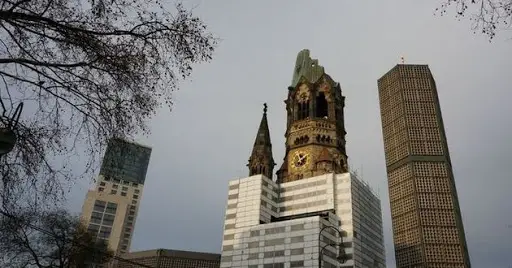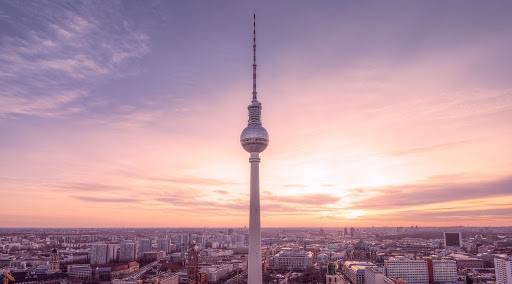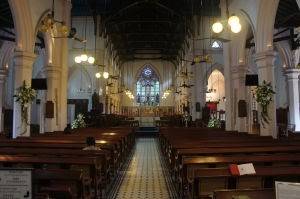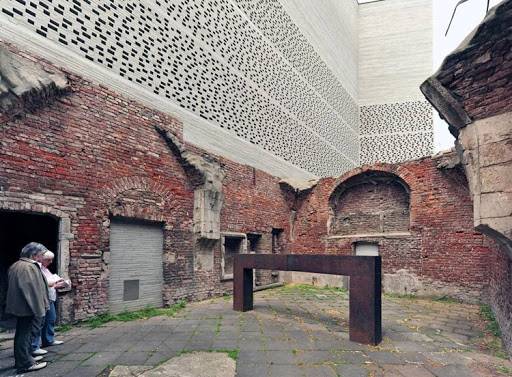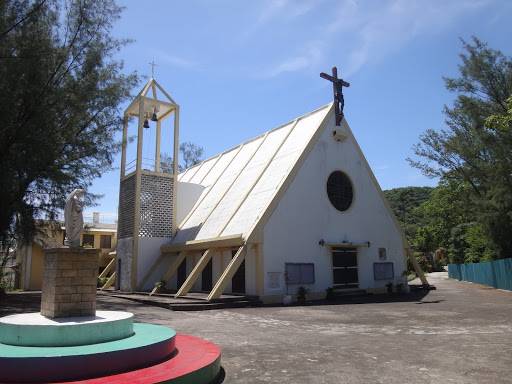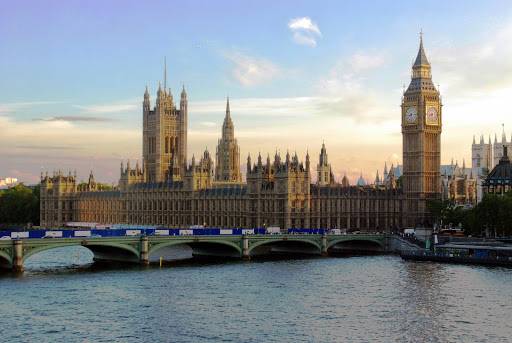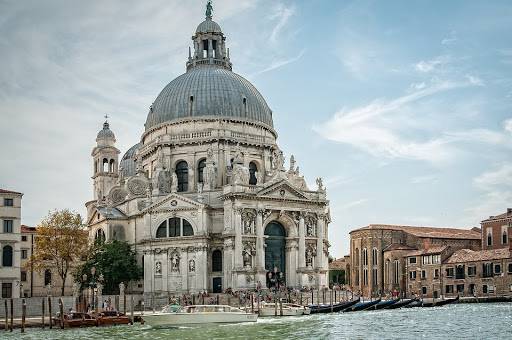It is hard to imagine that German cities in 1945 were as war-torn and devastated as some cities in Iraq or Syria are now. In some major cities, certain ruins were not rebuilt but preserved as witnesses to the brutal war, such as the Kaiser Wilhelm Memorial Church in Berlin.
Kaiser Wilhelm Memorial Church
The neo-Romanesque style Kaiser Wilhelm Memorial Church was completed in 1895. On November 23, 1945, it was set on fire and destroyed during an Allied air raid. After the war, the 71-meter-high damaged main tower was preserved as a symbol to remind people of the war. In 1961, four new towers were completed around the main tower. Both the old and new buildings are listed as protected monuments.
Franciscan Monastery Church
The Franciscan Monastery Church (Franziskaner-Klosterkirche) in the center of Berlin was founded in 1250 and dissolved during the Reformation in 1539. In 1945, most of the church was damaged in an air raid. Only a few outer walls were preserved. Since 2004, the restored ruins have occasionally hosted exhibitions, concerts, and theater performances.
St. Kolumba Church
Not far from St. Alban is St. Kolumba Church, the oldest Catholic church in Cologne. It was originally built in 980 AD and was almost completely destroyed in 1943, leaving only a few outer walls from the late medieval period and a statue of the Virgin Mary.
Chapel of Our Lady
Between 1947 and 1950, an octagonal Chapel of Our Lady was built on the original site for the statue of Our Lady. However, the people of Cologne still refer to it as the 'Madonna in the Rubble'. In 1956/57, a quadrangular Eucharistic chapel was built on the foundation of the Chapel of Our Lady. Unusually, in 2007, the St. Columba Church was completely integrated into the Cardinal's Art Museum (Diözesanmuseum).
Zerbst Palace
Zerbst Palace in Saxony-Anhalt is the ducal residence of Anhalt-Zerbst, built in the 17th century with three wings. Zerbst Palace is one of the most important Baroque buildings in central Germany.
The St. Nicholas Church in Hamburg was originally built in 1195. After a major fire in 1842, a grand new Gothic church was constructed on the original site and was completed in 1874. Its 147-meter-high tower was once the tallest building in the world. On July 28, 1943, the church was bombed and burned down. Only the tower and the crypt dome of St. Nicholas Church survived, remaining an unhealed wound to this day. After World War II, the Hamburg parliament decided not to rebuild the church but to preserve the ruins as a memorial for the victims of war and tyranny from 1933 to 1945. A documentation center was established in the basement, which hosts a long-term exhibition titled 'Operation Gomorrah - The Bombing of Hamburg.'
Church of Our Lady
In 1945, the Church of Our Lady in Dresden, a Baroque gem and a grand testament to Protestant church art, was reduced to ruins and rubble. Although it survived the massive air raid in February 1945, it collapsed the next day. For a long time, this ruin served as a memorial against war and destruction. The former East Germany did not have the financial means to restore the church. After the reunification of Germany, the Church of Our Lady began a nine-year reconstruction in 1996. Stones from the ruins were used in the new building. The project cost a total of 180 million euros, with 16 funding groups from both domestic and international sources participating. It stands as a symbol of hope and national unity.
Pforzheim
The Church of the Resurrection of Christ in Pforzheim, built in 1947, is the first church built in Germany after World War II, using 30,000 bricks excavated from the ruins of surrounding houses. It is not only a symbol of a new beginning but also set an example for the 46 temporary churches built thereafter in war-torn Germany.


